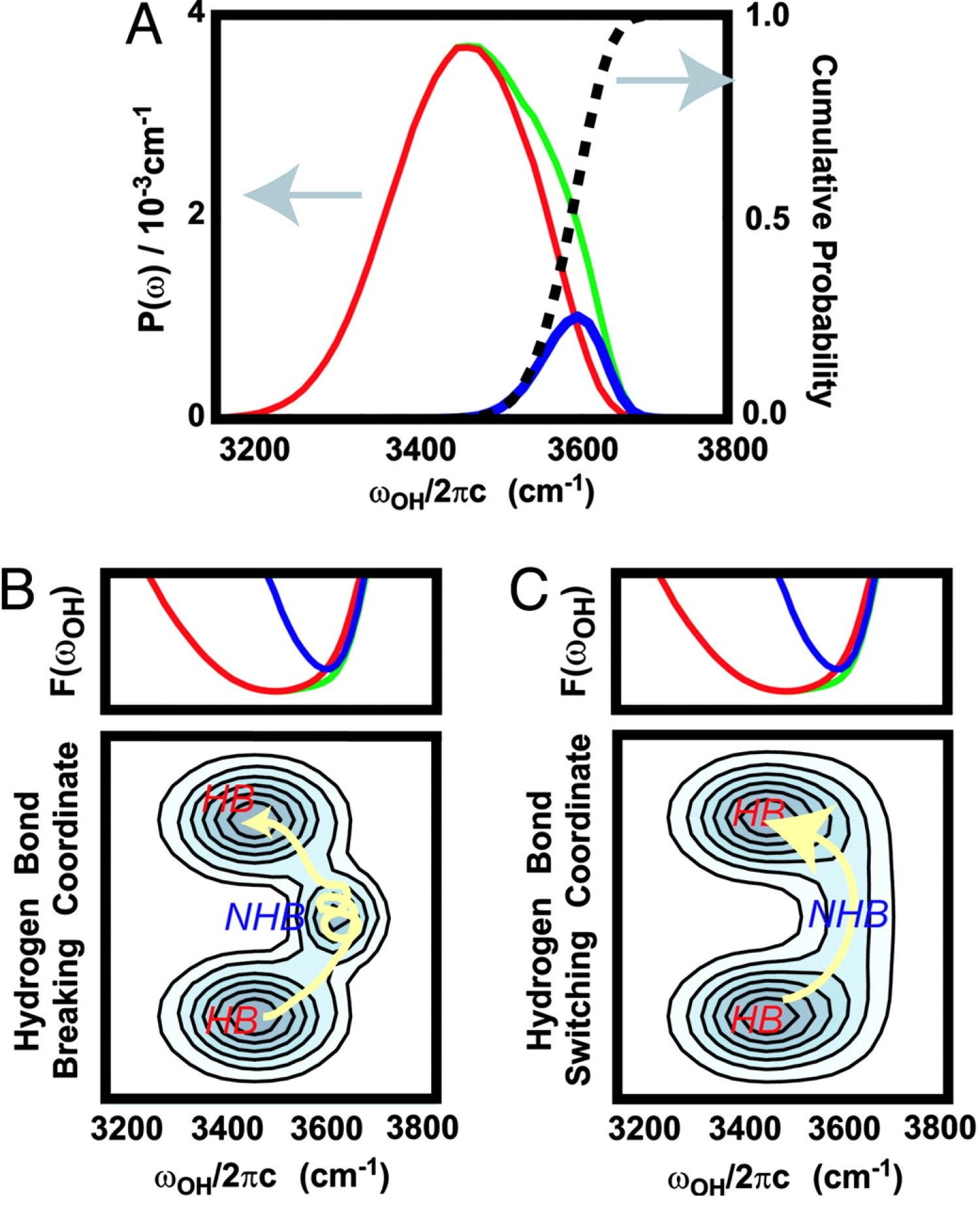Hydrogen bonds in liquid water are broken only fleetingly

Although it is widely accepted that the local structure of liquid water has tetrahedral arrangements of molecules ordered by hydrogen bonds, the mechanism by which water molecules switch hydrogen-bonded partners remains unclear. In this mechanism, the role of nonhydrogen-bonded configurations (NHBs) between adjacent molecules is of particular importance. A molecule may switch hydrogen-bonding partners either (i) through thermally activated breaking of a hydrogen bond that creates a dangling hydrogen bond before finding a new partner or (ii) by infrequent but rapid switching events in which the NHB is a transition state. Here, we report a combination of femtosecond 2D IR spectroscopy and molecular dynamics simulations to investigate the stability of NHB species in an isotopically dilute mixture of HOD in D2O. Measured 2D IR spectra reveal that hydrogen-bonded configurations and NHBs undergo qualitatively different relaxation dynamics, with NHBs returning to hydrogen-bonded frequencies on the time scale of water's fastest intermolecular motions. Simulations of an atomistic model for the OH vibrational spectroscopy of water yield qualitatively similar 2D IR spectra to those measured experimentally. Analysis of NHBs in simulations by quenching demonstrates that the vast majority of NHBs are in fact part of a hydrogen-bonded well of attraction and that virtually all molecules return to a hydrogen-bonding partner within 200 fs. The results from experiment and simulation demonstrate that NHBs are intrinsically unstable and that dangling hydrogen bonds are an insignificant species in liquid water.
Eaves, J. D.,* Loparo, J. J.,* Fecko, C. J., Roberts, S. T., Tokmakoff, A. and Geissler, P. L. Hydrogen bonds in liquid water are broken only fleetingly. Proc. Natl. Acad. Sci. 102, 13019 (2005)
* These authors contributed equally to this work

